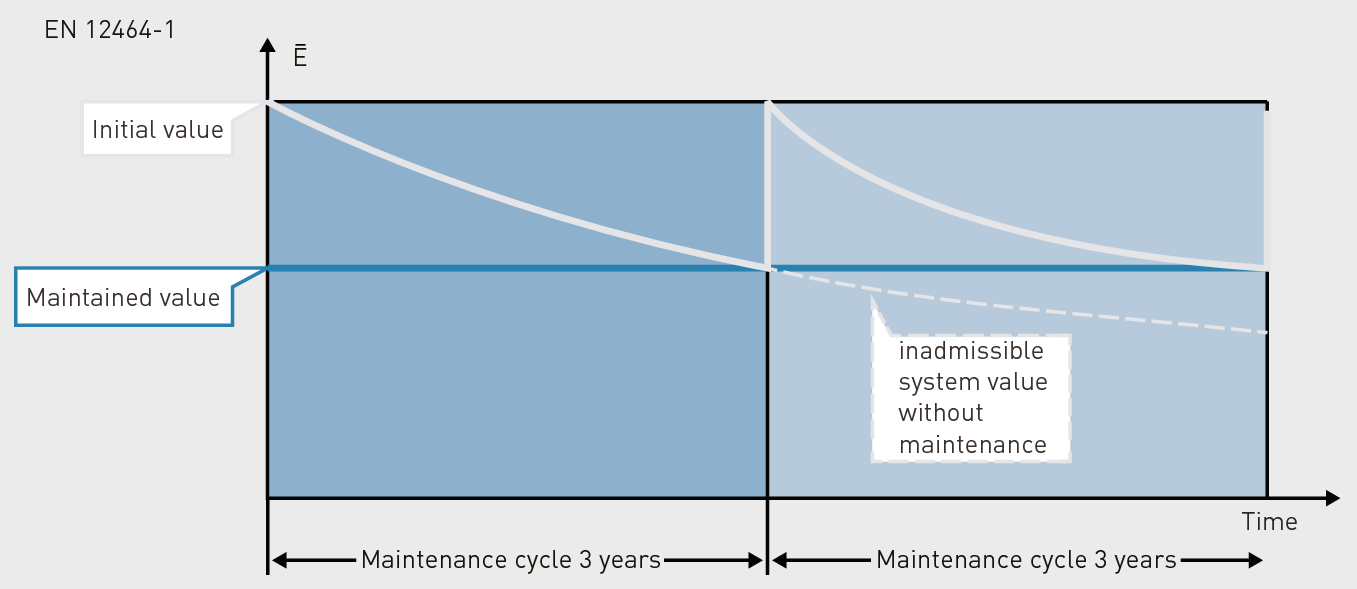
Figure 3.36: Decrease of average illuminance over the installation’s operation period for a three-year maintenance cycle
Postbox 1960
D-59753 Arnsberg

Figure 3.36: Decrease of average illuminance over the installation’s operation period for a three-year maintenance cycle
The illuminance and luminance levels in an artificial lighting installation do not remain constant over its period of operation. Over time, they decrease due to degradation and failure of light sources, soiling of lamps and luminaires, and for indoor lighting also due to the reduced reflectance values of the room surfaces (room soiling – see section "Illuminance").
The illuminance values recommended in EN 12464-1 must not be undercut at any time. They are therefore also referred to as maintained illuminance. In order to compensate for the decrease in illuminance/luminance due to operating conditions, the installation when new must have a correspondingly higher illuminance (initial value). During planning, the decrease is calculated using the maintenance factor. The initial illuminance, which is the basis for planning, is determined using maintained value and maintenance factor or its reciprocal value, the initial value factor:
Initial value = maintained value/maintenance factor
Initial value = maintained value · initial value factor
The maintenance factor MF depends on the type of light source and luminaire, the dust and soiling of the room as well as the maintenance method and the maintenance interval. Theoretically, the MF is composed of
lamp lumen maintenance factor LLMF (describes the decrease in lamp luminous flux of the light sources over the duration of use)
lamp survival factor LSF (describes the failure of light sources over the duration of use)
luminaire maintenance factor LMF (describes the influence of soiling of the optical system of the luminaire between two cleaning procedures) and the
room maintenance factor RMF (describes the deterioration of the utilization factor due to decreases in the reflectance values of the room boundary surfaces).
MF = LLMF · LSF · LMF · RMF
The product of lamp lumen maintenance factor LLMF and the lamp survival factor LSF is also referred to as lamp maintenance factor LaMF.
MF = LaMF · LMF · RMF
In most cases, the future operational influences on the decrease in illuminance are not sufficiently known at the time of planning so that the maintenance factor – as recommended by the standard EN 12464-1 – cannot be determined, but instead must be specified by the designer (see chapter "Rules and standards").
The system luminous flux Φ to be installed in lighting installations depends on the maintained illuminance Ēm and the size of the area A to be illuminated.

Φ |
system luminous flux |
Ēm |
maintained illuminance |
UF |
utilization factor |
A |
illuminated area |
MF |
maintenance factor |
The formula demonstrates that the total system luminous flux required for illumination and thus the number of lamps or luminaires needed decreases as the maintenance factor increases. A low maintenance factor leads to higher system luminous flux values and thus, as the case may be, more lamps, luminaires and investment costs.
Where precise object specifications are not available and different assumptions regarding the maintenance factor arise during planning, different system luminous flux values and thus different illuminance values can occur. This leads to unequal comparisons for the decision-maker:
Photometric planning data which is competing due to photometric installation data and commercial procedures such as mass lists, tenders, delivery and installations plans as well as total investment costs, cannot be compared.
Consequences for the operator:
Unclear consequences regarding compliance with e.g. health and safety requirements as well as
unclear yearly operating costs of the installation. In view of this, the realistic consideration of decreasing system values over time – meaning the maintenance factor – plays an important technical but also commercial role in planning comparability of lighting installations.
⚠
Where the maintenance factor MF is defined without objective grounds, significant consequences can arise.
⚠
The maintenance factor and all the assumptions made in order to determine it must be specified by the designer.
Generally, there are two possibilities for determining the maintenance factor, namely
using recommended reference maintenance factors and
basing it on the reference values of lamps, luminaires and the room.
For LED luminaires, the TRILUX portal offers its users a calculating tool (TRILUX LIFETIME CALCULATOR) for determining LLMF and LSF.
In the following sections, the determination of reference maintenance factors is illustrated.
The TRILUX LIFETIME CALCULATOR facilitates determination of LLMF and LSF for LED luminaires depending on duration of use and ambient temperature as well as conversion of different service life specifications (e.g. from L80 to L70, see also chapter 9.2.5 Service life of LED luminaires). The maintenance factor (MF) can be determined when LMF and RMF of the application are known.